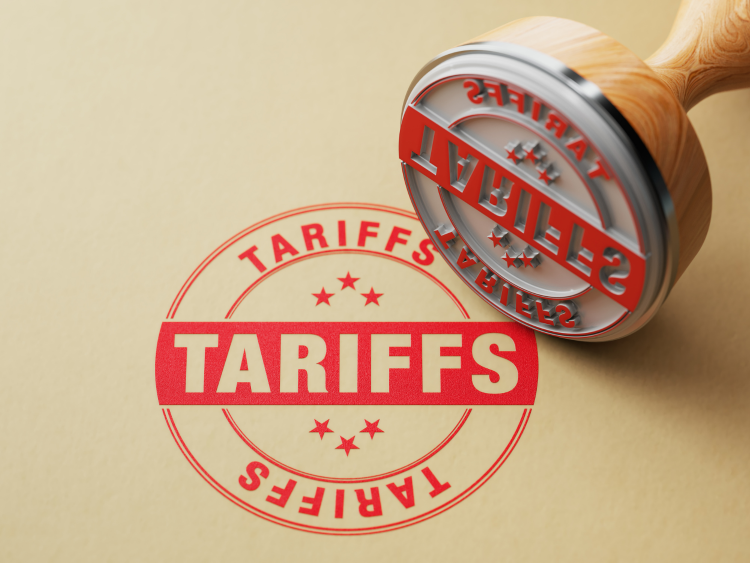Final Thoughts

January 6, 2025
The aluminum tariff dilemma
Written by Greg Wittbecker
We are 10 days away from Inauguration Day. The market still has no definitive clue as to how the Trump Administration will execute on its threat to apply universal tariffs to all imports. Compounding this are the threats to apply 25% duties against our USMCA partners, Canada, and Mexico.
A Washington Post article by Jeff Stein on January 6 seemed to have temporarily calmed some of the angst. The Post reported that Trump aides were looking at plans to apply tariffs more narrowly to sectors identified as critical imports. You ask, “what are critical imports?” These are imports deemed important for national or economic security. This would include steel, aluminum, copper, rare earths, and battery metals.
So, the logic being applied is “let’s put safeguard duties on these critical imports in order to incentivize companies to increase domestic production.”
25% duties on Canada accomplishes what? Lessons from Section 232.
Let’s think back to March 2018 and the imposition of Section 232 duties on steel (25%) and aluminum (10%).
In steel, those safeguard duties appear to have stimulated domestic production. Between 2018 and 2023, domestic steel production rose 2.3 million metric tons and electric arc furnaces (EAF) took the lion’s share of capacity growth. In 2020, EAF comprised 36% of capacity additions. In 2023, they were 92%.
Aluminum has not enjoyed any benefit from Section 232. In 2018, primary production was 891,000 metric tons. In 2023, production was down to 750,000 metric tons. January-October 2024 production stood at 564,000 tons with the annualized run rate now at 678,000 metric tons. During January 2024, Magnitude 7 shuttered its New Madrid MO smelter, leaving the U.S. with just 4 operating smelters.
U.S. imports 86% of its primary aluminum, and Canada is #1.
The U.S. remains a substantial deficit market in primary aluminum, requiring about 4.8 million tons of supply against that 678,000 tons of domestic output or imports of about 4.1 million tons.
Canada supplies about 70% of those import requirements and in calendar year 2024, those imports were worth about USD 11.5 billion. A 25% duty on Canadian aluminum would saddle U.S. aluminum buyers with another $2.87 billion in costs from the imposition of a 25% duty. This assumes that Canada would continue to supply the U.S.
Canada should join the EU. The U.S. implied tariffs could effectively put them there!
An article in The Economist January 2, 2025, argued that Canada should join the EU. The logic was that the EU needs resources and Canada needs people, in other words, EU provides viable markets for its resources. A move by the Trump Administration to tax Canadian imports at 25% would effectively push Canada into the EU aluminum market basis pure economic netbacks.
A 25% duty on aluminum levied on just the underlying LME cash price today (roughly $2,500 per metric ton) = $625 per metric ton or $0.28 per pound. Unless the U.S. Midwest aluminum ingot premium expressed over LME cash would rise by that amount, Canada will look for alternatives.
Here’s the math:
| USD over LME per Metric Ton | Rotterdam Duty Paid |
| Rotterdam Duty Paid | $380 |
| Less Freight to FOB Canada Smelter | ($100) |
| FOB Smelter Net Back | = $280 |
| Freight to USA | $66 |
| 25% Duty Basis LME Cash | $625 |
| Implied Duty Paid Midwest Premium Required to Match EU | = $971 |
| Equivalent Premium in US cents per pound | $0.44 |
The current Midwest premium as quoted on the CME for calendar 2025 ranges from $0.2497 (January) to $0.2680 (December). This clearly does NOT reflect an assumption of the 25% duty coming into effect.
For Canada to justify maintaining its current level of exports to the U.S. while incurring the 25% duty, Midwest premiums need to rise about $0.19 per pound. Otherwise, Canada will divert its production to the EU where it would be welcomed with open arms. Canadian metal is low-carbon (e.g., 2 metric tons of CO2 per ton of production) and would find a ready market in the EU, which stands on the verge of implementing its carbon border adjustment mechanism (CBAM) in January 2026.
Why is the market so nonchalant about the potential impact of the tariffs?
The CME and the Midwest have been heating up over the past two weeks, moving from roughly $0.20 per pound to the current level above. However, it’s well short of the threshold required to recoup the duty import. When speaking with a respected physical trader today, the comment was “it is an extremely high risk versus reward trade to add to a premium long at even these levels. Demand is still not that great and you are trying to handicap Trump’s mindset day by day. That is a dangerous play.”
What we are seeing are traders quietly positioning their physical premium longs within the U.S. and not risking the effects of the duty on fresh imports. This is taking the form of metal placed into public warehouse, custom-cleared or placed into consignment deals at consumer mills. Either approach ensures that metal is not liable for the higher duties from either a universal tariff or one targeted against Canada. An added incentive to do this now is the impending threat of the International Longshoremen’s strike on January 15, 2025. Any walk-out could paralyze impending imports and leave importers without the ability to get metal offloaded and customs cleared before new tariffs might come into effect after Inauguration Day.
Inflation with a capital “I” when it comes to Canada
This uncertainty over the imposition of duties against Canada comes at an incredible potential cost to the U.S. economy. Beyond the aluminum costs mentioned above, Canada’s total exports to the U.S. are about USD 412 billion. A 25% “haircut” for Canada would = USD 103 billion that they would have to reckon with. Some goods, like aluminum, could simply move elsewhere. However, some of the product flow may be inelastic and the burden of those duties would ripple through the supply chain to the ultimate end consumer.
Stay tuned for the next chapter.





